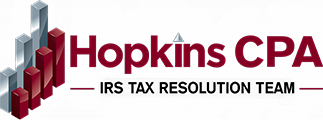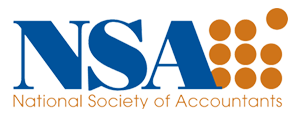Quarterly tax planning is essential for individuals and businesses, serving as a key strategy to manage tax obligations effectively. This process includes estimating earnings, calculating taxes due, and making timely payments to the IRS.
Proper management can ease the burden of tax season, help avoid penalties, and maintain good standing with tax authorities.
In this blog post, our goal is to simplify the tax planning process for you. By offering practical tips and straightforward insights, we want to make tax planning an easier part of your financial routine.
Let’s explore together how to simplify your approach to quarterly tax planning.
Understanding Quarterly Tax Obligations
The primary purpose of Quarterly Tax Planning is to distribute the tax burden evenly across the year, aiding in better financial management and cash flow for businesses. By estimating earnings and making tax payments quarterly, businesses can avoid the financial strain of a large tax bill at year’s end.
Who is Required to Pay?
This includes any business entity that does not have taxes automatically withheld from their income. Specifically, self-employed individuals, partnerships, and corporations should proactively manage their tax obligations each quarter. Engaging in quarterly tax planning ensures that these entities remain compliant with IRS requirements and avoid potential penalties
- Effective Management Strategies:
- Accurate Record-Keeping: Maintain detailed records of income and expenses. This is crucial for accurately estimating quarterly earnings and calculating the taxes due.
- Timely Earnings Estimation: Estimate your quarterly earnings as accurately as possible. This allows for a precise calculation of your tax obligations, making the process of quarterly tax planning more effective.
- Understanding Deductions: Familiarize yourself with allowable deductions to accurately calculate your quarterly tax payments. This can significantly reduce your taxable income and, consequently, your tax liability.
- Benefits of Quarterly Tax Planning: The primary advantage is the prevention of large, unexpected tax bills at the end of the fiscal year. Additionally, it helps in avoiding penalties associated with underpayment of taxes. Regular quarterly payments ensure that businesses stay on top of their tax obligations, contributing to overall financial health and stability.
- Seeking Professional Assistance: Hopkins CPA Firm, can assist you with your quarterly tax planning, offering expert advice and tailored strategies to meet your specific needs, ensuring you stay compliant and optimize your financial situation.
Who needs to make Quarterly Tax Payments?
For better understanding, we have broken it down into parts. Let’s have a look.
- Freelancers and Independent Contractors: With incomes that fluctuate and lack regular tax withholdings, freelancers and contractors must estimate and pay their taxes quarterly to avoid underpayment penalties.
- Small Business Quarterly Taxes: Managing small business quarterly taxes is vital for owners, whether you’re a sole proprietor, part of a partnership, or operate an S corporation. Quarterly tax planning is essential for meeting tax obligations on time, avoiding potential fines, and maintaining the financial health of your business.
- Investors: If you receive significant income from investments, such as dividends, capital gains, or interest, it’s important to account for these earnings in your quarterly tax payments. Proper planning can help manage the tax impact of these income streams effectively.
- Individuals with Diverse Income Sources: If you have various sources of income, such as rental properties, large sales, or prize winnings, it’s important to include these in your quarterly tax estimates. Diversified income often requires more nuanced tax planning to ensure all obligations are met.
Importance of Budgeting for Quarterly Tax Payments
Here is a detailed view of why budgeting is important for quarterly tax payments:
- Predictability: Effective budgeting enhances the ability to forecast financial obligations, creating a more stable financial environment. Knowing your tax commitments ahead of time allows for better financial planning and decision-making.
- Compliance: Making timely tax payments is essential for staying in compliance with tax laws. Proper budgeting ensures that funds are available when needed, helping to avoid penalties and interest charges associated with late or insufficient payments.
- Cash Flow Management: Incorporating tax payments into your regular budgeting process prevents unexpected cash flow issues. This careful allocation of funds means taxes can be paid without adversely impacting your savings or operational funds.
- Budgeting for taxes: A cornerstone practice that supports financial stability by ensuring that all tax obligations are met without undue strain. This proactive measure is key to avoiding penalties and managing cash flow effectively.
- Customized tax planning: Refines this process by adapting tax strategies to the unique financial situations of individuals or businesses. This approach considers various income streams, deductions, and credits to legally minimize tax liabilities.
- Financial Discipline: Setting aside money regularly for quarterly tax payments promotes a culture of financial discipline. This practice encourages thoughtful management of income and expenses, which is invaluable for both personal and business financial health.
- Avoidance of Debt: Budgeting for quarterly taxes decreases the likelihood of resorting to credit cards or loans to make tax payments, helping to avoid the accumulation of unnecessary debt and associated interest costs.
- Improved Financial Planning: A clear understanding of tax liabilities enables more informed financial planning. It allows individuals and businesses to strategically plan for investments, savings, and other financial ventures, optimizing overall financial outcomes.
Understanding Previous Quarter’s Performance
- Income Review: Start with a comprehensive analysis of the income generated during the previous quarter. This includes all revenue streams for businesses or all income sources for individuals, such as wages, freelance payments, investments, and any other earnings. Understanding the total income helps in estimating the tax liability more accurately.
- Expense Analysis: Examine all expenses incurred over the quarter. For businesses, this means operational costs, salaries, utilities, and any other business-related expenses. Individuals should consider personal expenses, including housing, utilities, healthcare, and living costs. Identifying where your money is going can highlight opportunities for cost-saving and more efficient tax planning.
- Tax Liability Assessment: Calculate the total tax liability based on the income and allowable deductions for the quarter. This step is crucial in understanding whether your previous tax payments were adequate or if adjustments are needed for future payments to avoid underpayment penalties.
- Financial Performance Insights: Combining the analysis of income, expenses, and tax liabilities offers valuable insights into your financial health. It can reveal trends, such as seasonal fluctuations in income or expenses, that are important for planning future tax payments.
Utilizing Past Performance Insights for Strategic Financial Forecasting!
- Adjusting Quarterly Estimates: Use the insights gained from the previous quarter’s performance to adjust your estimated tax payments for the upcoming quarters. This proactive approach ensures that your tax payments are aligned with actual financial performance, reducing the risk of overpayment or underpayment.
- Strategic Financial Decisions: Armed with a clear understanding of your past financial performance, you can make informed decisions about budgeting, investments, and expense management. For businesses, this might mean reallocating resources for better efficiency. For individuals, it could involve adjusting savings or investment strategies to optimize financial outcomes.
- Future Tax Planning: The analysis provides a foundation for more strategic tax planning. It allows for the identification of tax-saving opportunities, such as eligible deductions or credits that were previously overlooked. By incorporating these into your future tax payments, you can minimize your tax liability and enhance your financial security.
Tools and Resources for Forecasting Financial Performance
Accurate forecasting of financial performance is key to effective financial planning and management. Thankfully, various tools and resources are available to aid individuals and businesses in this endeavor. These tools can simplify the process, enhance accuracy, and provide valuable insights into future financial trends. Here’s an overview of some essential tools and resources for financial forecasting:
Financial Software and Applications
- Budgeting Software: Programs like Quicken, Mint, and YNAB (You Need A Budget) offer robust features for tracking income and expenses, setting up budgets, and forecasting future financial performance based on past trends.
- Spreadsheet Programs: Microsoft Excel and Google Sheets are powerful tools for financial forecasting. They allow for the creation of detailed financial models that can project future income, expenses, and cash flow based on various assumptions.
- Business Financial Planning Software: Tools like QuickBooks, FreshBooks, and Xero provide more comprehensive features for businesses, including invoicing, expense tracking, and financial reporting, which can be used for accurate financial forecasting.
Professional Advisory Services
- Certified Public Accountants (CPAs): CPAs can offer personalized advice and assistance in creating accurate financial forecasts. They can also provide insights into tax planning, ensuring your forecasts are aligned with tax obligations.
- Financial Advisors: For individuals or businesses facing complex financial scenarios, seeking the guidance of a financial advisor is invaluable. Hopkins CPA can serve as your trusted advisor, providing expert advice on investment strategies, risk management, and comprehensive financial planning.
Online Resources and Guides
- Financial Blogs and Websites: Numerous online platforms offer free advice, tutorials, and templates for financial forecasting. Websites like Investopedia, The Balance, and Forbes provide a wealth of information that can assist in understanding financial trends and how to forecast them.
- IRS Tools and Resources: The IRS provides publications and calculators that can aid in understanding how tax obligations might impact your income projection, ensuring more accurate forecasting.
Industry-Specific Resources
- Trade Associations and Organizations: Many industries have trade associations that provide resources, research, and data imports specific to that industry, which can be incredibly valuable for financial forecasting.
- Market Research Firms: Companies like Nielsen and Gartner offer market research and analysis that can provide insights into industry trends, consumer behavior, and economic forecasts, all of which are beneficial for financial planning.
Strategies for Reducing Tax Liabilities!
Effectively managing your tax liabilities is a crucial aspect of financial planning, known as tax planning optimization, which can lead to significant savings and enhance your tax benefits. Whether you’re an individual taxpayer or running a business, implementing strategic tax planning techniques can help you minimize your obligations to the IRS while ensuring full compliance with tax laws.
Here are practical strategies, including tax-saving tips for each quarter, designed to reduce tax liabilities and enhance your benefits:
Maximize deductions and credits:
- Stay informed: Regularly update yourself on the latest tax deductions and credits available. Being aware can lead to substantial savings, embodying the essence of tax planning optimization.
- Itemize Deductions: If your allowable expenses exceed the standard deduction, itemizing can lower your taxable income. Common itemized deductions include mortgage interest, property taxes, medical expenses, and charitable contributions.
- Utilize Tax Credits: Tax credits, such as the Earned Income Tax Credit (EITC), education credits, or credits for energy-efficient home improvements, can directly reduce the amount of tax you owe, dollar for dollar.
Invest in Retirement Accounts:
- Increase Contributions: Contributing to retirement accounts like an IRA or 401(k) prepares you for the future and reduces your current taxable income. Consider maximizing these contributions within the legal limits as part of your quarterly tax-saving tips.
Leverage Health Savings Accounts (HSAs) and Flexible Spending Accounts (FSAs):
- Pre-tax Contributions: Funds contributed to HSAs and FSAs are pre-tax, reducing your taxable income. These accounts can be used for qualifying medical expenses, providing a dual benefit of tax savings and health expense management.
Consider the Structure of Your Investments:
- Tax-Efficient Investing: Choose investments that offer tax benefits, such as municipal bonds, which are often exempt from federal taxes, or long-term investments that qualify for lower capital gains tax rates.
- Tax Loss Harvesting: This strategy involves selling securities at a loss to offset a capital gains tax liability. It’s a practical approach to managing your investment portfolio while optimizing tax benefits.
Optimize Business Expenses
- Business Deductions: Businesses can deduct legitimate business expenses, reducing taxable income. This includes costs like office supplies, travel expenses, and employee salaries.
- Asset Depreciation: Take advantage of depreciation deductions for business assets. This spreads the cost of an asset over its useful life, reducing taxable income each year.
Reviewing and Adjusting Tax Strategies Quarterly
Let’s look at it in detail:
- Quarterly Financial Review: At the end of each quarter, take a detailed look at your finances. Assess changes in your income, track your expenses, and note any significant financial transactions. This step is crucial for identifying adjustments needed in your tax strategy to reflect your current financial status accurately.
- Tax Law Awareness: Tax legislation can change frequently, impacting your financial planning. Stay informed about these changes to leverage new tax savings opportunities and adhere to your legal responsibilities.
- Deductions and Credits Evaluation: Use the information from your quarterly financial review to reassess your eligibility for tax deductions and credits. Ensuring you’re making the most of these can significantly reduce your taxable income.
- Tax Payment Adjustments: Based on your quarterly review, adjust your estimated tax payments accordingly. This helps avoid underpayment penalties or overpayments, thereby optimizing your cash flow.
- Implementation of Adjustments: Act swiftly to make any necessary changes to your tax planning. Timely adjustments ensure that your strategy stays relevant to both your financial situation and the current tax environment.
- Documentation: Keep comprehensive records of any changes made to your tax strategies, including why these changes were necessary and how they’re expected to impact your finances. This documentation will be crucial for future planning and any necessary discussions with tax authorities.
End Note!
Following the strategies and insights shared in this article can turn quarterly tax planning into a straightforward aspect of your financial management. Engaging in systematic and anticipatory planning throughout the year helps you accurately forecast tax liabilities, eliminate surprises, and fortify your financial health.
Initiate your steps towards simplifying quarterly tax planning now. With persistence and the right guidance, managing your finances and reaching your financial goals are entirely achievable.
For specialized advice and support with quarterly tax planning, Hopkins CPA Firm (you go-to CPA Corpus Christi) is at your service. Our skilled team knows the ins and outs of tax laws and planning techniques. We can create a plan specifically designed for your financial needs. Let us assist you in achieving financial clarity and security with our expert services.









